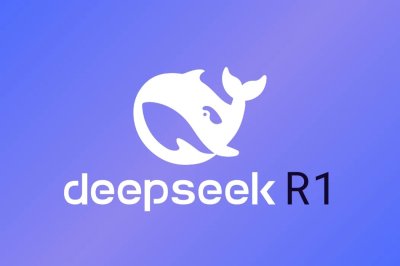Gradio
Build & share delightful machine learning apps
app building python development tool gradio interactive model web interfaceTool Information
| Primary Task | Models |
|---|---|
| Category | ai-and-machine-learning |
| Country | United States |
Gradio is an AI tool designed to provide an efficient method for creating and sharing machine learning applications with a user-friendly web interface. It allows developers to quickly demo their machine learning models, enabling easy interaction with their models for anybody from any location. The tool can be installed with pip, and creating a Gradio interface requires only a couple of lines of code, allowing for a fast and easy setup. The system is compatible with any Python library on a user's computer, and if a Python function can be written, Gradio has the ability to run it. Gradio provides options to share the interface: it can be integrated into Python notebooks or presented as a webpage. The Gradio interface can generate a public link that can be shared with colleagues, facilitating remote access and interaction with the model from their devices. Once an interface is established, the tool provides the option for permanent hosting on Hugging Face. This is a platform that hosts the interface on its servers and provides a link for sharing. Gradio has been utilized across a wide variety of industries, signifying its adaptability and versatility in machine learning operations. It enables the creation of a seamless link between machine learning models and their intended users, making machine learning technologies more accessible and easier to apply.
Gradio is a company based in Mountain View, California, that focuses on creating user-friendly interfaces for machine learning models. Founded in 2019, Gradio allows developers and data scientists to easily build and share interactive demos and web applications. The company was acquired by Hugging Face in December 2021.
Gradio's main product is a Python library that enables users to create web interfaces for their machine learning models with minimal effort. This library supports various input types, including text, images, audio, video, and code. Key features include fast UI generation, multi-modal support, live sharing capabilities, built-in hosting through Hugging Face Spaces, interactive examples, and customizable themes and layouts. Gradio's tools are widely used by developers and data scientists across different industries to enhance their machine learning projects.
| Pros |
|---|
|
| Cons |
|---|
|
Frequently Asked Questions
1. What is Gradio?
Gradio is a powerful tool designed for developers who wish to rapidly create and share machine learning apps. It features a user-friendly web interface that permits any device to interact with machine learning models. Gradio supports permanent hosting on Hugging Face Spaces, allowing users to share their apps conveniently.
2. How easy is it to install Gradio?
Installing Gradio is a fast and straightforward process. It requires only a few lines of code to establish an interface for a function. Gradio can be installed using pip, which is a package installer for Python.
3. What tasks can I use Gradio for?
Gradio can be utilized for a wide range of tasks. These include, but are not limited to, sketch recognition, question answering, image segmentation, and time series forecasting.
4. Can Gradio be integrated into Python notebooks?
Yes, Gradio can be seamlessly integrated into Python notebooks. This allows for a more interactive and collaborative workspace where users can test, share, and get feedback on their machine learning models.
5. What kind of projects can I use Gradio for?
Gradio can be used for a diverse array of projects. Its previous uses encompass creating a video-related deep learning project, a text-to-speech demonstration, a real-time AI trial, and a dinosaur classifier.
6. How can I share my Gradio apps with others?
Gradio apps can be easily shared with others. After creating an interface, you can display it on Hugging Face Spaces. A Gradio interface can automatically generate a public link, which can be shared, allowing colleagues to interact with the model from their devices.
7. Can Gradio be used for sketch recognition?
Yes, Gradio can be employed for sketch recognition tasks. A Gradio interface has been demonstrated effectively on their website, using 'sketchpad' as the input type and 'label' as the output.
8. How can I use Gradio for question answering?
Gradio can be effectively used for question answering tasks in machine learning. It can be set up to take two text inputs (context and question) and output the results in a textbox.
9. Can Gradio be used for image segmentation?
Yes, Gradio can be used for image segmentation tasks. Implementing an image segmentation model with Gradio requires an 'image' as the input type and another 'image' as the output.
10. Can Gradio be used for time series forecasting?
Yes, Gradio can assist in time series forecasting. It has been marked as one of the specific tasks it supports.
11. Can Gradio be presented as a webpage?
Indeed, Gradio can be introduced as a webpage. This presents an excellent opportunity to demo your models to the public, as anyone can interact with the model remotely from their device through the webpage.
12. What does it mean to host Gradio on Hugging Face Spaces?
Hosting Gradio on Hugging Face Spaces means that once you've built an interface, it can be permanently hosted on Hugging Face’s server. Hugging Face will provide a link which can be shared, allowing others to interact with the hosted Gradio interface, making your machine learning model accessible for multiple users.
13. How can I get started with Gradio?
To start with Gradio, you can access the 'Get Started' option on their website. It provides the necessary resources to install and get familiarized with Gradio.
14. What types of interfaces can I use with Gradio?
Gradio offers a variety of interface types to match your functions. These can range from text boxes, labels, sketchpads, images, and more, depending on what is necessary for showcasing your machine learning model.
15. How can I implement my machine learning model with Gradio?
To implement your machine learning model with Gradio, you would need to customize an interface using Gradio code to correspond with the requirements of your specific model. You can pass in the function implementation of your machine learning model into the Gradio Interface.
16. What kind of real-time AI trials can be performed using Gradio?
Real-time AI trials can be performed using Gradio. An example is the development and testing of new algorithms through clinical trials, as mentioned by a user on their website.
17. How can I permanently host my Gradio app?
To permanently host your Gradio app, you can utilize Hugging Face Spaces. This will host the interface on its servers and provide you with a link that can be shared.
18. Can I generate a public link to share my Gradio interface?
Yes, you can generate a public link to share your Gradio interface. This allows colleagues or clients to interact with the model on your computer remotely from their own devices.
19. How does Gradio benefit my machine learning project?
Gradio benefits your machine learning project by providing a quick, effective way to demonstrate your model to anyone, anywhere. Its user-friendly web interface enables people to interact with your model on any device. Plus, it aids in real-time testing and receiving feedback, thus improving the overall efficiency and impact of your project.
20. How can I add a Gradio interface to my existing project?
To add a Gradio interface to your existing project, you only need to write a few lines of code. You define your interface with the required function, inputs and outputs, and Gradio will handle the rest. Gradio can be embedded directly into your Python project.
Comments
Similar Tools
Related News

In an era where digital threats constantly evolve, ransomware stands as one of the most insidious and damaging forms of cyberat...
@devadigax | Sep 29, 2025

In a stunning testament to the accelerating pace of artificial intelligence innovation, a new challenger has rapidly ascended t...
@devadigax | Sep 29, 2025

Opera, the long-standing Norwegian software company known for its innovative web browsing solutions, has officially launched it...
@devadigax | Sep 29, 2025

OpenAI, the trailblazing artificial intelligence research company, is reportedly venturing into the competitive world of online...
@devadigax | Sep 29, 2025

OpenAI, the pioneering force behind ChatGPT and DALL-E, is reportedly on the cusp of a revolutionary leap into the social media...
@devadigax | Sep 29, 2025

Anthropic, a leading AI research and safety company, has made a significant stride in the artificial intelligence landscape wit...
@devadigax | Sep 29, 2025
 AI Tool Buzz
AI Tool Buzz